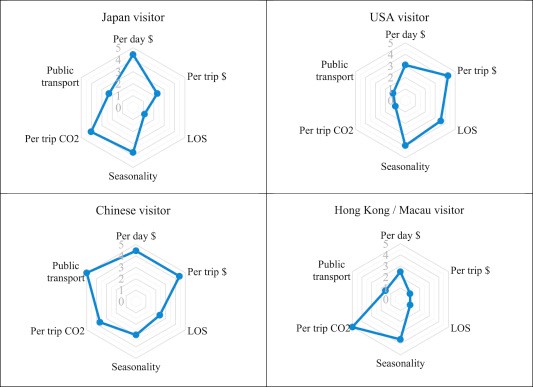Recent research – Decarbonising the tourism sector
Sun, Y. Y., Lin, P. C., & Higham, J. (2020). Managing tourism emissions through optimizing the tourism demand mix: Concept and analysis. Tourism Management, 81(May), 104161. https://doi.org/10.1016/j.tourman.2020.104161
Currently, there are two avenues to feasibly mitigate carbon emissions from the tourism sector; improving the eco-efficiency of tourism business (e.g. increasing numbers of electric vehicles or developing more sustainable accommodation options) and fostering sustainable travel practices (e.g. encouraging travel closer to home, the use of non-motorised transport, or taking longer, less frequent trips, etc.). James Higham of the University of Otago’s Department of Tourism, along with Ya-Yen Sun and Pei-Chun Lin of the University of Queensland and National Cheng Kung University, Taiwan, respectively, investigate an alternative solution.
Managing tourism emissions through optimizing the tourism demand mix: Concept and analysis advances the optimisation approach as a third way to reduce emissions from the tourism sector. This approach seeks to optimise the “demand mix” or the proportion of visitors who come from different generating markets, to reduce a destination’s overall anthropogenic greenhouse gas emissions from tourism, whilst at the same time, optimising the economic and social impacts of tourism.
Optimisation of the demand mix is grounded in the reality that visitors from different places generally consume in different ways; they may stay for a longer time in the country, visit in particular seasons, or buy products that are of particular benefit to the local economy. The figure below shows the profiles of different visitor markets, from the case study discussed in this paper. This figure shows the ranking of an average visitor from each of these different markets based on six different criteria; the higher the number, the better the ranking. A perfect visitor would show up as a hexagon along the outermost edge of their respective chart.

Reproduced from Sun et al. 2020 (Fig. 2). Radar charts on 6 indicators for four international visitors to Taiwan. LOS – Length of Stay
James and his team developed a mathematical model that can assess various scenarios against their social, economic, and GHG emissions mitigation outcomes, by varying the demand mix based on these profiles. As well as incorporating social and economic considerations, their model limits the allowed variation in visitor numbers from any one market; simply decommissioning high-emissions markets and encouraging the expansion of low-emissions markets, or removing an entire visitor market from a country’s tourism profile to achieve emissions reductions is neither realistic nor sustainable. For this reason, constraints are imposed in the model that reflect the societal capacity to deal with these changes. By applying constraints like these, and having societal impacts integrated into the model, any recommended result, James and his team argue, can be achievable and (more) sustainable.
The authors applied their model to a case study of Taiwan, a country where the tourism sector contributes a high proportion of national carbon emissions compared to its relative contribution to GDP.
This model is run using scenarios, or different sets of constraints and prioritised objectives, and the scenarios run for the Taiwanese case study vary from the very simple to the highly complex. The results of each scenario are then the demand mix (various increases or decreases in visitor numbers from different markets or origins) and the resultant changes in total visitor numbers, emissions, seasonality of visitors, and total spending, among other metrics.
For example, two scenarios were run that differed only in their primary objective; one prioritised emissions reductions, and the other, economic benefits, all other things being equal. Looking at the results, emissions reductions and total spending for each scenario behaved as expected, but in the scenario where the economic impact of tourism was given priority, visitor numbers became significantly more seasonal and the length of their average stay decreased, compared to when emissions reductions were prioritised. Results from contrasting scenarios like these can be used to help decision makers investigate the impact of differing objectives on their tourism portfolios.
In all, this framework offers a new tool for tourism market planning, being able to begin to direct incremental change in the visitor mix over time, to work towards a climate-safe tourism future. However, James and his team highlight that for the best result, overall tourism demand must also decrease, in this case by 5%. This tells us that optimising the visitor portfolio with tools like this must happen alongside efforts to reduce visitor volume, as well as encouraging increasing eco-efficiency and sustainable travel practices.
Authorship contribution statement:
Ya-Yen Sun: Conceptualization, Resources, Visualization, Writing – original draft.
Pei-Chun Lin: Methodology, Formal analysis, Writing – original draft.
James Higham: Conceptualization, Writing – review & editing.
Notes:
The authors plan to publish a follow up piece in the next few months, applying this analysis to the New Zealand tourism industry.
James has also given a seminar last year in our series Conversations on Climate Change, entitled Decarbonising Tourism. To watch the recording of this talk, please visit: https://www.youtube.com/watch?v=MJxXIQw5KAk

